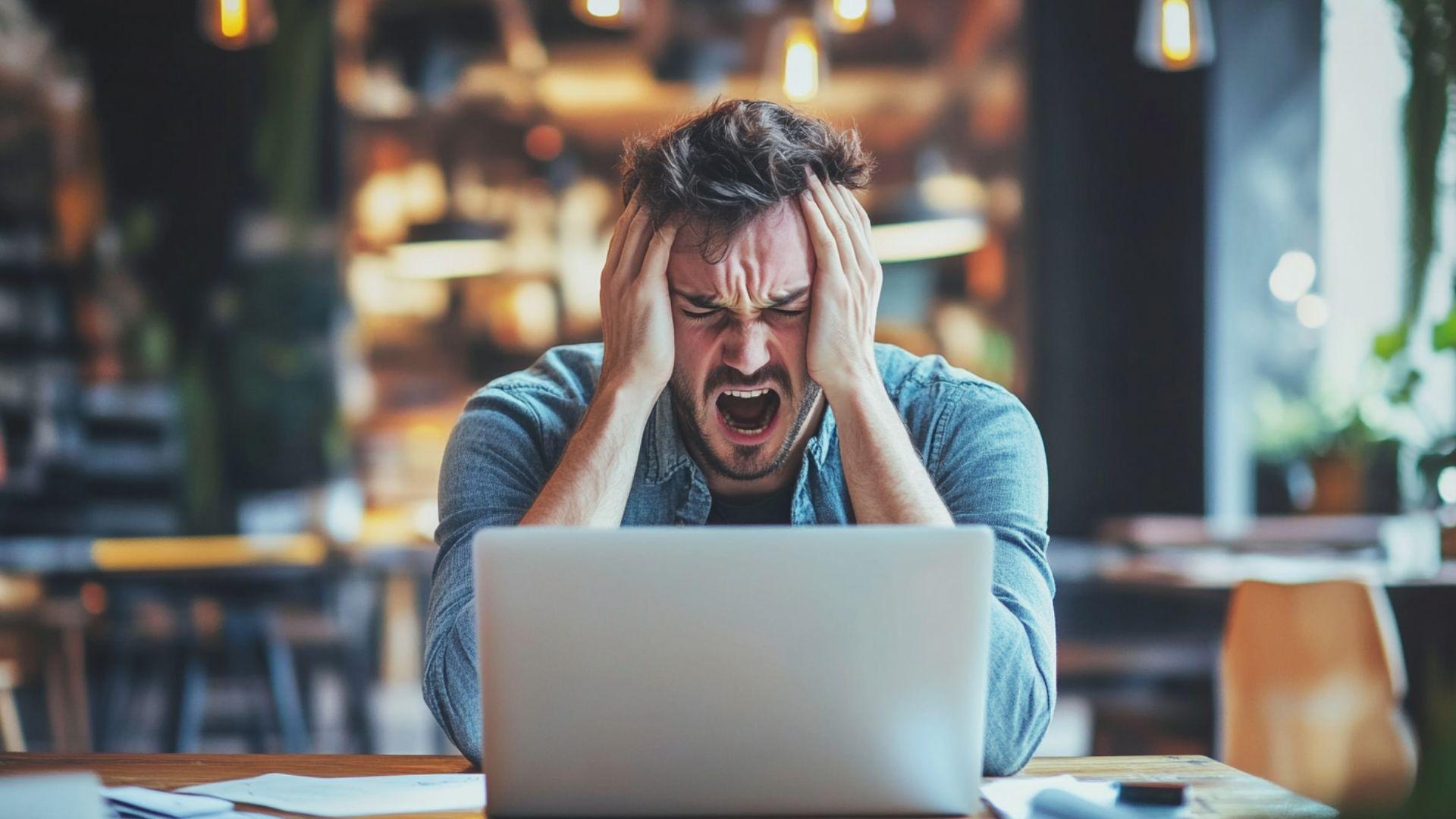
Image optimization for SEO entails altering visuals present on a webpage. This assists in elevating their visibility and efficiency in search engine outcomes. It involves rendering images more accessible and quicker to load. This enhances overall website SEO.
SEO for images is crucial as it amplifies the prominence of your webpage. A larger audience will access your site when your visuals surface in search outcomes. This potentially results in increased traffic and prospective clientele. Moreover, search platforms such as Google consider image enhancement when evaluating websites.
The first vital element of image optimization for SEO is employing alternative tags. Alt tags serve as explanations of images, assisting search engines in understanding their substance. By utilizing detailed alternative tags, you can enhance your webpage's SEO.
Another pivotal aspect is the dimensions of your images. Oversized images can impede your website's performance, adversely affecting your SEO. Adjusting and compressing your images to decrease their size and enhance loading speed is imperative.
Adhering to image SEO best practices can elevate your website's position in search outcomes. By selecting appropriate file formats, adjusting image dimensions, and employing alternative tags, you can enhance your website's SEO and draw more visitors.
Optimizing images for SEO is indispensable, as it elevates search engine rankings. By employing alt tags, webpages can guarantee that their images contribute to their broader SEO efforts.
Importance of optimizing images for website
Improving graphics for a website is imperative. It boosts search engine standings and user interaction. Image enhancement for SEO can profoundly affect a site's prominence and effectiveness.
Advantages of enhancing visuals for a website:
- Elevated search engine standings. Enhanced visuals can lessen your site's visibility on search engine outcome pages (SEOPs). This leads to heightened standings and augmented organic traffic.
- Accelerated page loading velocity. SEO image size is an important factor. Enhanced visuals diminish file sizes and improve loading speeds. This results in expedited and smoother user interaction. It's crucial for SEO as search engines prioritize swift-loading sites.
- Augmented user interaction. High-caliber and correctly enhanced visuals enhance the entire user interaction. They provide captivating visual content pertinent to the page.
- Enhanced accessibility. SEO alt tags offer substitute textual portrayals for visuals. This renders them accessible to users with impairments who rely on screen readers.
- Increased involvement. Visually enticing visuals captivate users' focus and prompt them to linger longer on your site. This lessens bounce rates and heightens involvement metrics.
- Heightened conversion rates. Enhanced visuals can effectively convey information, persuading users to take desired actions. This results in amplified conversion rates and enhanced business outcomes.
- Mobile enhancement. Enhanced visuals are imperative for mobile optimization. It ensures optimal site performance on mobile gadgets. Moreover, it guarantees seamless user interaction across all platforms.
- Competitive edge. Adopting images SEO best practices can confer a competitive advantage over other sites that overlook this facet of SEO. This may lead to superior standings and augmented visibility in search outcomes.
Augmenting visuals for a website can substantially influence its performance and prosperity. Adhere to prime methodologies and guarantee that your visuals are adequately enhanced. This way, you can amplify search engine standings and elevate user engagement.
Tips for Images Optimization for SEO
Ensuring that your pictures are enhanced for search engines can profoundly impact your site's efficacy. This entails various tactics and optimal practices aimed at augmenting visibility. They contribute to heightening the relevance of your visuals in search engine outcomes.
Selecting the appropriate visual file format is the initial step in optimizing visuals for SEO. Standard formats like PNG, JPEG, and WebP provide distinct quality and file size benefits. You can ensure peak performance by opting for the most fitting format for your visuals. Adjusting visuals for web usage and refining SEO image size are pivotal steps in visual optimization for SEO.
So, let's consider the top 10 tips for image optimization for SEO.
1. Opt for the right image file type
Selecting a suitable visual file type is crucial for optimizing visuals for SEO. Common formats like PNG, JPEG, and WebP offer varying advantages in terms of quality and file size. Choose the format that aligns best with your requirements while balancing visual quality and page loading speed.
2. Resize images for web use
Rescaling visuals to suit the proportions of your webpage layout is crucial for enhancing them for SEO. Avoid resizing visuals using CSS or HTML. This can impact visual quality and page performance. Instead, utilize online utilities like Squoosh or TinyPNG to scale visuals effortlessly and effectively.
3. Optimize SEO image size
Ensuring that your visuals are properly dimensioned is vital for SEO. Compress visuals using utilities like Squoosh or TinyPNG. This aids in reducing load times and enhancing page speed, both crucial factors for SEO triumph.
4. Use SEO alt tags
Alt tags offer substitute textual representations for visuals. This aids search engines in comprehending their substance. Compose detailed alt tags that precisely mirror the visual content. They should incorporate pertinent keywords to amplify SEO. Additionally, alternative descriptors are crucial for inclusivity. They furnish textual depictions for individuals with visual impairments.
5. Write descriptive image file names
Assign descriptive titles to your image files that mirror their essence. Incorporate relevant keywords when suitable. Avoid employing commonplace file designations like "IMG_1234.jpg". Opt instead for evocative labels that augment SEO. They furnish supplementary insight to search algorithms concerning the visual content.
6. Use responsive images
Ensure your visuals are adaptable and accommodate various screen dimensions and resolutions effectively. Utilize HTML attributes like srcset and sizes or CSS properties like object-fit and object-position to create responsive images for optimal user interaction and SEO. Adaptable visuals guarantee that your webpage looks excellent on all devices and help improve SEO rankings.
7. Add structured data
Incorporate structured information markup for your visuals. This offers supplementary context to search engines. It elevates their prominence in search outcomes. Structured data supports search engines in comprehending the substance and relevance of your pictures. This heightens their likelihood of being showcased in abundant search outcomes.
8. Optimize image titles
Enhance image headings with informative and keyword-laden text to enhance SEO and user engagement. Craft headings that precisely depict the image substance. Integrate pertinent keywords to heighten their detectability in search outcomes. Headings hold significance in terms of SEO for images. They furnish supplementary details and context to search algorithms. This aids search algorithms in comprehending the image content more effectively.
9. Utilize supported image file formats
Stick to widely supported image file formats like PNG, JPEG, and WebP to ensure compatibility across browsers and devices. Using supported formats helps prevent compatibility issues. Besides, it ensures that your images are accessible to all users. Avoid using uncommon or outdated image formats that all browsers and devices may not support.
10. Use an image CDN
Utilize an image content delivery network (CDN) to deliver images faster and optimize performance. Image CDNs cache and optimize pictures, reducing load durations and improving user satisfaction. This positively impacts SEO. Additionally, image CDNs provide features like image transformation, compression, caching, and security. These further enhance your website's performance and SEO.
Adhering to image enhancement top guidelines will enhance your website's SEO efficacy. This will draw in a greater volume of natural traffic from search engines. Improving your images for SEO can augment your website's prominence. Furthermore, it elevates user satisfaction and fosters greater conversions and income.
Common Mistakes to avoid in image optimization
When it comes to optimizing images for SEO, there are several common mistakes that website owners often make. These errors may have adverse effects on your webpage's performance. Consequently, they can impede its capacity to attain prominent visibility in search engine rankings. By sidestepping them, you can ensure that your images contribute positively to your SEO endeavors.
Disregarding image file size
Failing to optimize the file size of your images is a prevalent error in image optimization for SEO. Bulky image files can decelerate your website's loading pace. This leads to a detrimental impact on user experience and SEO. Compressing and refining your images to diminish their file size without compromising quality is imperative. Utilizing tools such as Squoosh or TinyPNG facilitates easy compression of images.
Overlooking alt tags
Alt tags furnish textual depictions of images, aiding search engines in comprehending their essence. Neglecting SEO alt tags or employing irrelevant descriptions equates to forfeiting an opportunity to augment your website's visibility in search engine results. Ensure to craft descriptive alt tags that precisely delineate the content of your images. Make sure they incorporate pertinent keywords.
Using generic image file names
Another common mistake in image optimization is using generic file names for your pictures. Generic file names like "IMG_1234.jpg" provide little context to search engines about the image's content. Instead, use descriptive file names that accurately describe the image. This includes relevant keywords. By doing so, you can improve your webpage's SEO. It also makes it easier for search engines to understand the content of your images.
Overlooking responsive design
Ensuring your images are responsive and adapt well to different screen sizes and resolutions is essential. However, many website owners overlook this aspect of image optimization. Failure to use responsive pictures can result in a poor user experience on mobile devices. This, in turn, can negatively impact your website's SEO. Make sure to use HTML attributes like srcset and sizes or CSS properties like object-fit and object-position. This will help you create responsive images that provide a seamless experience across all devices.
Lack of structured data
Organized data markup is an essential facet of image enhancement that is frequently disregarded. Structured data is among images SEO best practices. It aids search engines in comprehending the substance and milieu of your visuals. This comprehension can heighten their prominence in search outcomes. Devoid of organized data, your visuals might not be correctly cataloged or showcased in affluent search outcomes. Ensure that you incorporate structured data markup for your visuals. This inclusion can augment their prominence and facilitate your website's SEO efficacy.
Not utilizing image CDNs
Image content delivery networks (CDNs) are valuable tools for optimizing image delivery speed and performance. However, many website owners fail to take advantage of them. Image CDNs cache and optimize pictures. This reduces load times and improves user experience, positively impacting your website's SEO. Utilize an image CDN to ensure fast and efficient image delivery on your webpage.
Avoiding these typical mistakes enhance your website's SEO efficacy. Consequently, you will elevate the user experience for your visitors. Take heed of image file magnitude, SEO alt tags, file titles, adaptable design, and structured information. Consider also image CDNs to ensure that your images contribute positively to your overall SEO strategy.
Tools for SEO image optimization
When optimizing images for SEO, using the right tools can significantly improve your website's performance. Here are some top tools for SEO image optimization:
- Squoosh. Squoosh is a free online tool developed by Google that allows you to compress and resize images without losing quality. It's effortless to utilize and provides various compression alternatives to enhance images.
- TinyPNG. TinyPNG is a utility for condensing visuals to diminish file size without compromising excellence. It caters to both PNG and JPEG formats and enhances page loading velocity.
- Yoast SEO. It is an exhaustive WordPress extension that encompasses functionalities for refining visuals for SEO. It enables you to incorporate alternative tags, fine-tune visual headings, and formulate XML sitemaps.
- RankMath. RankMath is another WordPress SEO extension that presents sophisticated visual enhancement functionalities. It assists in refining SEO alt tags, file appellations, and proportions.
- Cloudinary. Cloudinary is a cloud-based image management platform. It provides various tools for optimizing images for the web. It offers image compression, resizing, and format conversion to improve page loading speed and SEO.
- Imgix. Imgix is a real-time image processing and delivery service that helps optimize pictures for web use. It offers automatic format conversion, responsive image delivery, and image optimization algorithms. This enhances SEO and user experience.
- Akamai. Akamai is a content delivery network (CDN). It provides image optimization services to enhance website functionality and SEO. It offers features like image caching and compression. This ensures fast and reliable image delivery to users.
Here is a brief table with all the most popular tools:
| Tool | Description | Use Cases |
| Squoosh | Allows users to compress and resize images while maintaining quality. | Ideal for optimizing individual images for websites, blogs, and social media posts. |
| TinyPNG | Reduces file sizes without significant loss of quality. | Suitable for compressing PNG and JPEG images for web use. |
| Yoast SEO | A comprehensive WordPress plugin that includes image optimization features. Among them are SEO alt tags generation and structured data markup. | Helpful in optimizing pictures within WordPress websites, ensuring they meet SEO standards. |
| RankMath | Contains image optimization capabilities, like alt tag optimization and image sitemap generation. | Helpful for enhancing image SEO and improving search engine visibility and rankings. |
| Cloudinary | Image management platform that provides tools for image optimization, manipulation, and delivery. | Ideal for businesses and developers needing scalable solutions for image optimization for SEO. |
| Imgix | Offers advanced image optimization features and real-time image editing capabilities. | Suitable for websites and applications requiring high-performance image optimization. |
| Akamai | Offers image optimization services to improve website performance and user experience. | Useful for large websites and e-commerce platforms needing fast and efficient image delivery. |
Employing these instruments can assist you in optimizing visuals for SEO and enhance your webpage's online presence.
Conclusion
Image optimization for SEO is crucial for amplifying website exposure. It assists in drawing more natural traffic from search engines.
Furthermore, giving utmost importance to the comprehensive user experience is crucial. Enhanced visuals improve search engine rankings and expedite page loading times. This leads to improved accessibility for users, including those with impairments who depend on assistive technology.
Enhancing visuals for search engine optimization guarantees that search engines readily identify your images. Utilize diverse methods such as elaborate alternative descriptors and optimizing image proportions. This will amplify search engine detectability.
Visual enhancement for SEO is a crucial component of modern digital marketing approaches. Give precedence to enhancing your website's visuals. Consequently, you will boost both user interaction and search engine detectability. This will assist in drawing a broader audience and attaining exceptional online results.
learn with mettevo
view blog


Are You Ready To Grow Your Website?
Understanding the ins and outs of website growth, we help ensure that your site grows over time with ever-increasing reach and accessibility. Not only do we employ the latest digital marketing techniques for driving traffic directly to your website, but our strategies also focus on gaining loyalty from those visitors so they come back again and again.
Leave your contacts to get a comprehensive and aggressive digital marketing plan taking your business to new heights.